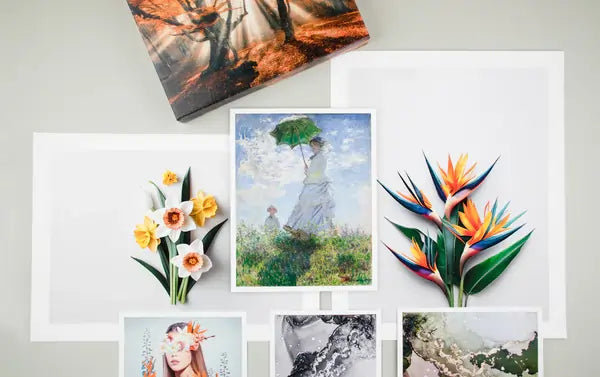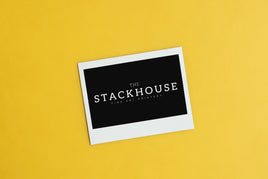Inkjet giclée printing gives artists a wide range of size options. The best sizes to offer depend on file quality, aspect ratio, and frame availability. Use this guide to pick sizes that look great, sell well, and are easy for your customers to display.
Start with File Quality
Resolution sets your practical size limit. As a simple rule, divide your pixel dimensions by 300 to estimate the maximum print size in inches. If you stretch beyond that, detail can soften.
- Formula: width pixels ÷ 300 by height pixels ÷ 300
- Example: 6000 × 4000 pixels prints best around 20 × 13 inches or smaller
Not sure your file is large enough? See our quick guide: How to Check Your Image Resolution. If you need to crop or enlarge, review How to Use the Crop Tool.
Match Sizes to Aspect Ratio
Your aspect ratio is the relationship between width and height after any cropping. Sticking to the same ratio lets you offer multiple sizes without cutting off important content. For a deeper dive, read Mastering Aspect Ratios.
Popular sizes by aspect ratio
| Aspect Ratio | Frame-friendly Sizes | Notes |
|---|---|---|
| 1:1 | 8×8, 12×12, 16×16, 20×20 | Great for square compositions and social crops |
| 2:3 | 4×6, 8×12, 12×18, 16×24, 20×30 | Native for many camera sensors |
| 3:4 | 6×8, 9×12, 12×16, 18×24 | Common for tablets and many artworks |
| 4:5 | 8×10, 16×20, 24×30 | Classic fine art ratio |
| 5:7 | 5×7, 10×14 | Popular gift sizes |
| 11:14 | 11×14 | Very common frame size that does not match 4:5 exactly |
Want a fast recommendation by ratio and frame availability? See our guide to choosing the right size.
Offer Popular, Easy-to-Frame Sizes
Customers buy more when they can frame easily. We stock and ship a wide range of standardized sizes that pair well with off the shelf frames.
- Everyday sizes: 5×7, 8×10, 11×14
- Gallery staples: 12×16, 16×20, 18×24, 20×30
- Square formats: 8×8, 12×12, 16×16
See current options on our print sizes and pricing page. Need a custom size? Contact us and we will confirm feasibility, price, and turnaround.
Use a Multi-Size Strategy
Offering a small, well chosen set helps customers decide without overwhelming them. Start with three to five sizes that fit your ratio and your audience.
- Pick one entry size for gifting or markets, such as 5×7 or 8×10
- Add one mid size that shows detail, such as 12×16 or 16×20
- Add one hero size for impact, such as 18×24 or 20×30
- Consider a square variant if the composition works
You can list multiple sizes online without holding inventory by using on demand fulfillment. Our store checks your upload and hides sizes that do not meet resolution requirements.
Borders, Mats, and Cropping
Borders and mats influence perceived size and framing options. A border can create signature space and prevent the image from touching the frame or mat window.
- If you add a border in the file, your printed area shrinks. Plan the final image size accordingly
- If you rely on a mat for a border, keep your image at the full ratio and let the mat create the margin
- Cropping changes aspect ratio. Re check your size family if you crop
For layout tips, see our Sizing and Borders Guide. For cropping walkthroughs, use the Crop Tool article.
Check Product Formats and Size Limits
Some products have size constraints due to material widths, machinery, or shipping. For example, gallery wrapped canvas and certain mat packages only run to specific dimensions. Compare your target sizes with the product format before you commit.
Quick Action Checklist
- Confirm resolution with the 300 DPI rule or our resolution guide
- Identify your aspect ratio and pick a matching size family
- Offer three to five sizes that are easy to frame
- Decide on borders or mats before final sizing
- Verify product size limits and shipping constraints
Need help choosing sizes for your artwork? Contact our team for a quick review, or browse print sizes and pricing to get started.









